This must be the fastest Mitsubishi Triton on earth. In fact, calling it a Triton is somewhat tenuous, because apart from the body and the hollowed-out dash in the cabin, there’s little that the Mitsubishi design and engineering department would’ve signed off on – and there’s no way the Japanese maker envisaged this when the first L200 rolled off the production line in 1978. No time for that now: I’m in third-gear, too focused to look at the speedo as I grip the wheel and hold on for dear life. The track’s tipping off-camber with a tight left-hander rushing towards me, and I know, just know, that we’re going to make it. Or are we? Could this thing tip over? After all, this is a dual-cab ute that’s being shoved along by a 6.2-litre V8… is it all too much for a ladder-chassis brickie’s work truck?
This 2021 SuperUte prototype built by Sieders Racing Team is, at last, what the category and the fans have wanted. In the wake of Australian manufacturing’s end, replacing the Commodore and Falcon V8 utes that made up the category saw the series take on the new sales race winners: dual cab utes, like the Toyota Hilux, the best-selling vehicle in Australia every year since 2016. To reflect that, they were powered by their manufacturer’s turbo-diesel powertrains running additives to avoid belching out black entrails. Kicking off in 2018, crowds and competitors were lacking, and the entertainment came in the form of clumsy rollovers…
“To be honest, we’re doing what we wanted to do back in 2016 now,” said Luke Sieders, SuperUtes series co-owner and the owner of the Triton prototype we’re steering at Sydney Motorsport Park. “We all wanted to go V8 back then, but we were steered down the diesel path, and we had to go the diesel path. We’ve done that, and that didn’t work,” he says candidly.
The turbo-diesel engines are now history. For Triton, it was a 2.4-litre four-cylinder turbo-diesel. Now, the same chassis has a stonking 6.2-litre Chevrolet Performance V8 in its place. That’s right: a 298kW (400hp) crate motor, the engine of tuning legend and one that proved a fitting swansong in the last Aussie-built SS Commodores, Camaro and of course the C6 Corvette. This is the engine that will beat under the bonnet of every SuperUte regardless of the donor chassis. Yes, even a Ford will be powered by a General Motors V8!

It’s a genuine wonder why the switch to V8s wasn’t made sooner: the neatly presented LS3 sits lower in the Triton’s engine bay – even if the engine centreline hasn’t changed – and is lighter, too, being of all-alloy construction with fewer ancillaries. It’s expected to last up to three seasons of competition without a major rebuild, again reducing overall running costs compared to the diesel.
Accommodating the LS3 has also been surprisingly simple. “We’ve dropped 150kg out of the Triton since we’ve gone V8, so obviously the spring and shock rates are going to be a fair way out now,” Sieders explains. “All the utes are going to be the same, because we’ve taken 25-30kg out of the weight with the wiring from Haltech; the engine itself on most cars is 60-70kg lighter; then smaller 18-inch wheels, smaller tyres, takes out more weight again and lowers the centre of gravity for better handling, safety and reliability.”

The new powerplant matches up to the same control Tremec T6060 six-speed H-pattern manual – even using the same mounting points and oil lines – through to a Detroit nine-inch diff for rear-wheel drive goodness in place of the Mitsubishi Super-select four-wheel drive system. Once the fine-tuning’s sorted, the front coil-overs will be control units, giving every SuperUte a standardised track width with an adapter plate to suit the various makes, while there’s a control rear cradle mounted under the tray with coil springs replacing the Triton’s factory leaf springs, and again, a standard rear track. The only variation that will remain is the wheelbase across each individual model, making parity all the easier across brands – again, another win for making the switch to the Chev engine.
“Realistically, parity should be pretty darn close, and to be honest, the only parity issues we had before were with the diesel engines,” Sieders explains. “We had 2.4 versus 3.2 versus 2.8-litres. Some were good on long straights, some were good on shorty snappy stuff, there were rev range differences, and although it was really close, that was the only difference we really had.”
“It’s still high off the ground compared to anything else seen on a race track this side of Monster trucks”
Opening the door reveals a pure race-car cabin – or do we have to say race truck? There’s clean painted metal everywhere as I throw my legs over the smartly finished roll-cage. The Triton dash is there for show, as it’s literally the top half of the outer shell with the bottom scuppered. The HVAC remains, but it’s not connected.
The door trims are carbon fibre, with a small round metal ring used to pull them shut from the inside, as the door pulls are gone, too. The standard indicator and light stalks remain, as is the barrel for the key, hidden behind the OMP flat-bottomed race steering wheel with digital display showing speed/gear etc. mounted on the shiny billet column. The wheel includes push-buttons for ‘rain’, ‘reverse’ and ‘pit’.

A near-emptied dual-cab ute cabin has a lot of space, but as I struggle to squeeze into the tight Racetech driver’s seat, that illusion is gone. I’m super snug, and so are my feet – in fact, I put my feet on the wrong metal pedals as I do up my belts, missing the huge throttle to the right in the surprisingly narrow footwell – it’s barely three of my feet wide.
Above my head on the top roll bar is a huge mirror and a switch panel next to aircraft toggles: I push and hold ‘Start’. Instant satisfaction: the V8 rumble is strong yet soothing. The sound doesn’t match the visual expectation of a dual-cab ute, but in the driver’s seat, it’s already clear that this is a proper piece of race engineering, not a backyard hack. The sound is very Supercars – it’s not a deep bellow, but a gear-driven V8 rumble for the high-revving LS3. It’s certainly no four-pot diesel.
I push the quite light, yet springy clutch pedal in, grab the thin gear lever of the H-pattern gearbox and lock in first gear with a solid, permanent feeling. I slowly lift off to ride the clutch, as I’ve been warned that the throttle map is, erm, instant. It is – but I manage to meander up pit-lane without looking like a learner driver bunny-hopping along. I get to the pit exit and wham – that loud pedal and V8 roar soaks everything. It’s intoxicating.
“It’s a solid block of obedient race car behaving in unison, not a jumbling mess of ladder chassis, cab and tray”
Instantly, I think yes, this is what this should be – finally a V8 ute, a V8 dual cab racing series – it feels so great to have that sound, the vibration through your right foot spreading over your entire body and the rush of the first turn as we head over a crest. The nose barely lifts as the still 1800kg Triton hooks up, the acceleration rapid yet not mind blowing, while there’s no wheelspin or ungainly power down. Under throttle, the Triton stays straight and true, with the diff and rear suspension cradle delivering 298kW nicely to the track.
As I gather speed, I realised I’m sitting in something quite high off the ground, but as soon as the first apex comes at me, the driving engagement has me completely forgetting I’m in a dual-cab ute – well, mostly. All round vision is excellent, with large mirrors and Perspex windows, but a subtle reminder that you’re in something truck-based is the long reach to the gear shifter, despite its actually being mounted quite high on a long shaft – there’s no chance of short-throw neat shifts here, with the gear throws correspondingly long. It’s not bad, just not in race-car realm, mind you, which gives me no excuse for messing up a few changes as my left arm navigates the six-speeder.
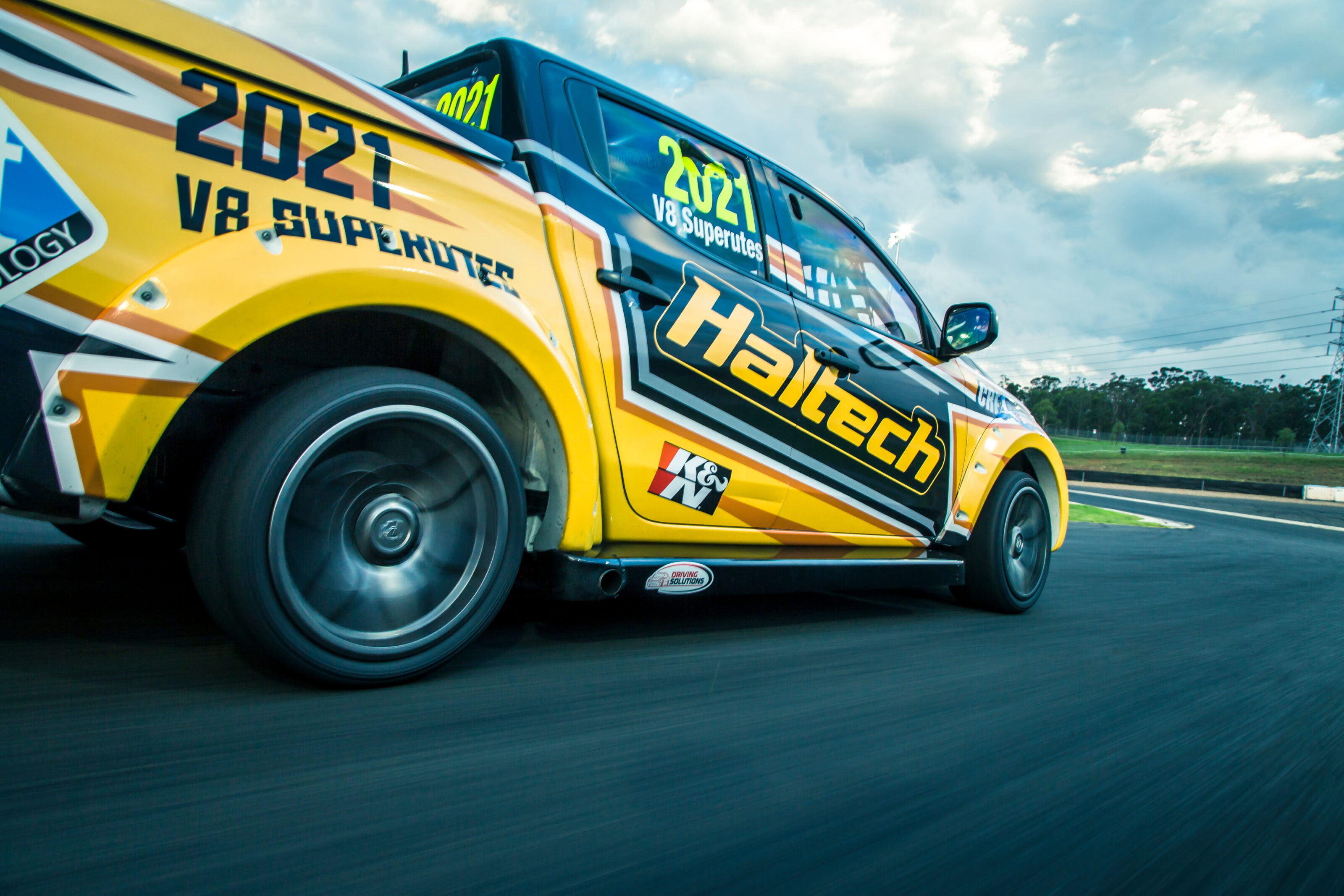
The pedals, despite the initial cramped-in feeling, are well positioned. I dab the brake, which feels like a solid metal block, with little response – thankfully the slightly quick steering is well weighted, yet light and precise enough with the relatively small wheel for me to just turn instead to wash off speed, and the nose responds and we head uphill to the next right-left-right-left complex. I wasn’t going too hard, too early, which helped, as did the shakedown just before I got behind the wheel.
“You need to really stand on the brakes – it’s a pedal box,” yells David Seiders, Luke’s brother, sitting next to me as some sort of insurance policy. I take a few more stabs and several corners before I realise Dave means stand on it, literally. The brakes are immense – they make me feel invincible, with the Triton extremely stable even under my clumsy efforts, which would have the tradie’s Triton nose-diving and lurching all over the place.
Between the pedal’s stop and go, the Triton has supreme lateral grip on the Yokohama tyres, and there’s very little body roll: you can use the throttle to play with the exit speed, powering down with confidence, and while spins and powerslides are surely a breeze, in the bone-dry track conditions as we lap the ‘Amaroo’ layout of Sydney Motorsport Park, it isn’t a handful. We’re in second and third gear the whole time, so hardly near its straight-line optimum, with the track itself probably unfairly technical, tight and twisty to flatter the Triton, but that ultimately makes it perfect to show its true dynamic colours. We’re seeing its genuine capability today.
“Despite the on-paper concept of a 298kW dual-cab seeming nonsensical, almost foolish, it works brilliantly”
The layout brings a constant workload, calling for delicate throttle inputs and perfectly timed brake applications to maximise its pace point-to-point. However, it’s almost as if the handling is somewhat the easy part, with brilliant change of direction and predictability – quite a feat in a vehicle made for a category previously famed for rollovers. It’s still high off the ground compared to anything else seen on a race track this side of Monster trucks. The ground clearance means there’s pure confidence to flatten sausage kerbs unperturbed, altering the racing line compared to more traditionally fragile racers, relegating track limits to symbolic only. The challenge is which to cut and which to avoid in the name of what’s quicker point-to-point.
In the back on my mind, despite its confident composure under heavy braking and during upshifts and downshifts, I’m waiting for a snap oversteer or wondering what it’s like to spin a high-powered tallboy. I’m more concerned with pulling the Triton up and positioning it for the next corner, because on the way up the gearchange snap never comes, the fear never realised. “There were concerns with the weight [during development], but there aren’t any,” Luke Sieders adds. “The actual corner weights of the car are in the realms of an HSV Commodore. It looks bigger, but it’s not.” He’s right. The misgivings are all in your head as a driver. It’s a solid block of obedient race car behaving in unison, not a jumbling mess of ladder chassis, cab and tray like you might expect.
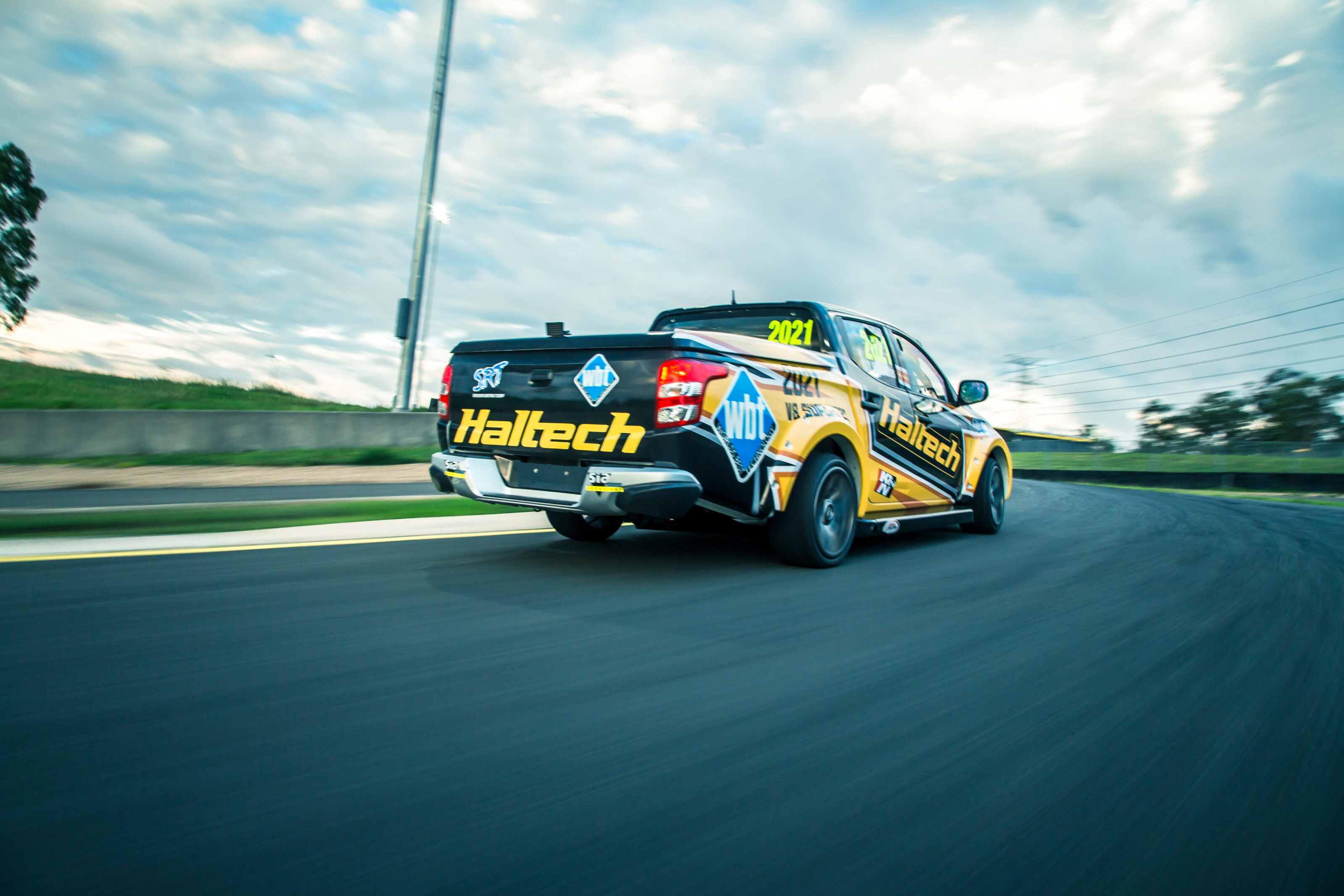
Seiders’s development work has seen the 2021 V8 SuperUte lap the full Sydney Motorsport Park layout a whopping seven seconds faster than 2020’s turbo-diesel versions, and impressively, around two seconds faster than the old Commodore/Falcon V8s.
What that means is a capable, enjoyable race car that is far removed from its genesis as a tradie’s tool. Oddly unique, arguably pure Australiana madness in concept, it’s simple to drive at a canter, but not easy to be supremely fast. It will reward racers with technique and depth, because despite the on-paper concept of a 298kW dual-cab seeming nonsensical, almost foolish, it works brilliantly. It makes you want to drive it more. The V8 also gives this machine much wanted character and charm compared to the diesel version it welcomely replaces. The Benny Hill music will no longer come out when these cars are on track – it’ll be more like AC/DC’s Thunderstuck.
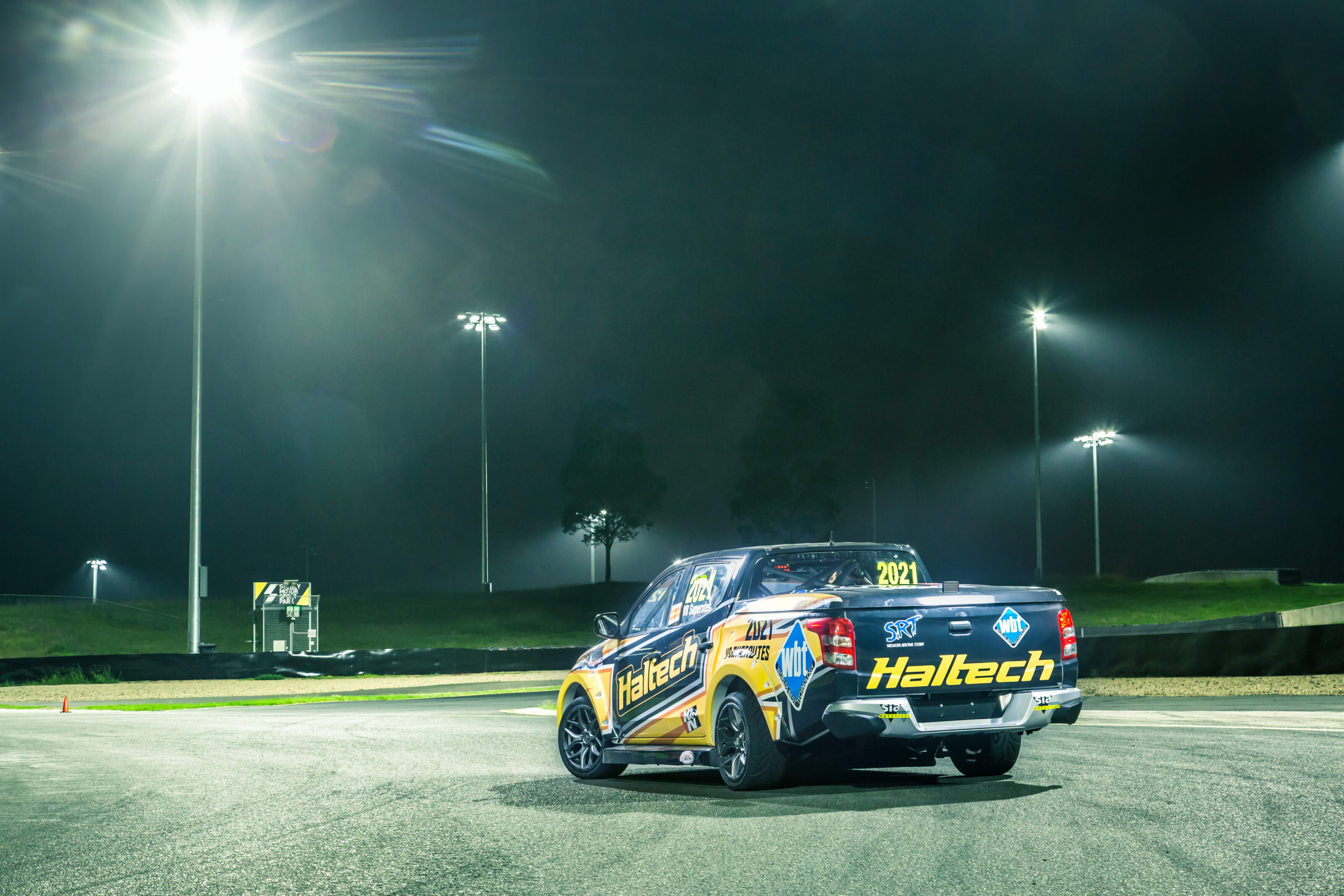
We recommend
-
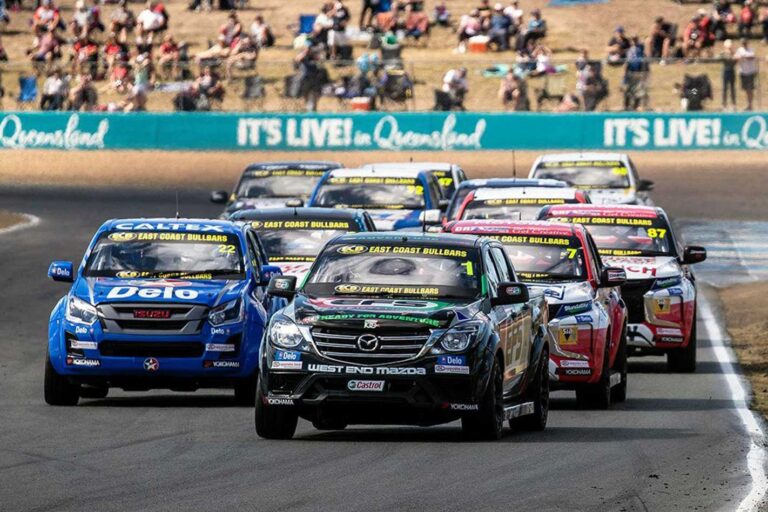 Motorsport
MotorsportSuperUtes series to adopt V8 engines
New management hopes to revive stagnant dual-cab races with more excitement
-
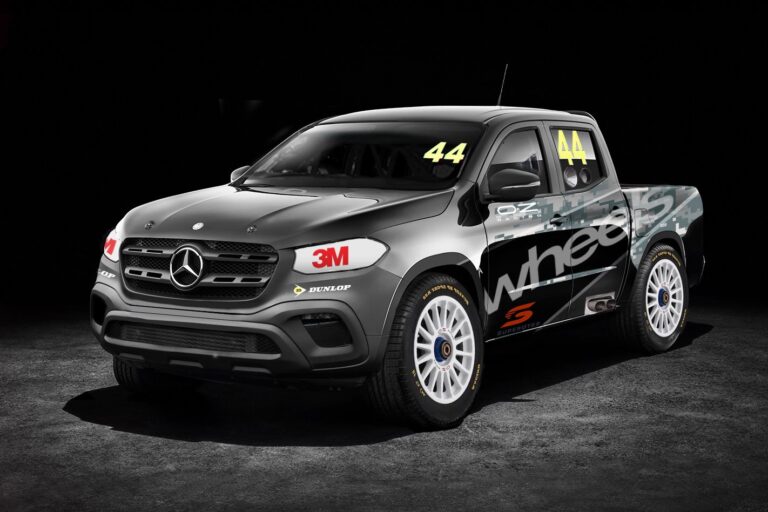 Motorsport
MotorsportMercedes-Benz X-Class SuperUte – What if?
We imagine what a race-ready SuperUte version of the Mercedes-Benz X-Class could look like
-
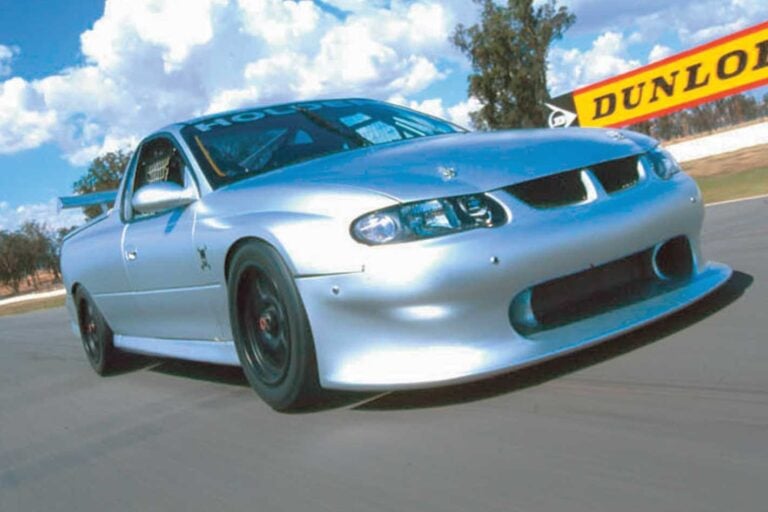 Features
Features2002 Holden V8 Supercar Thunder Ute review
This is no ordinary circle work special, but a stormin’ 380kW V8 Supercar Ute





